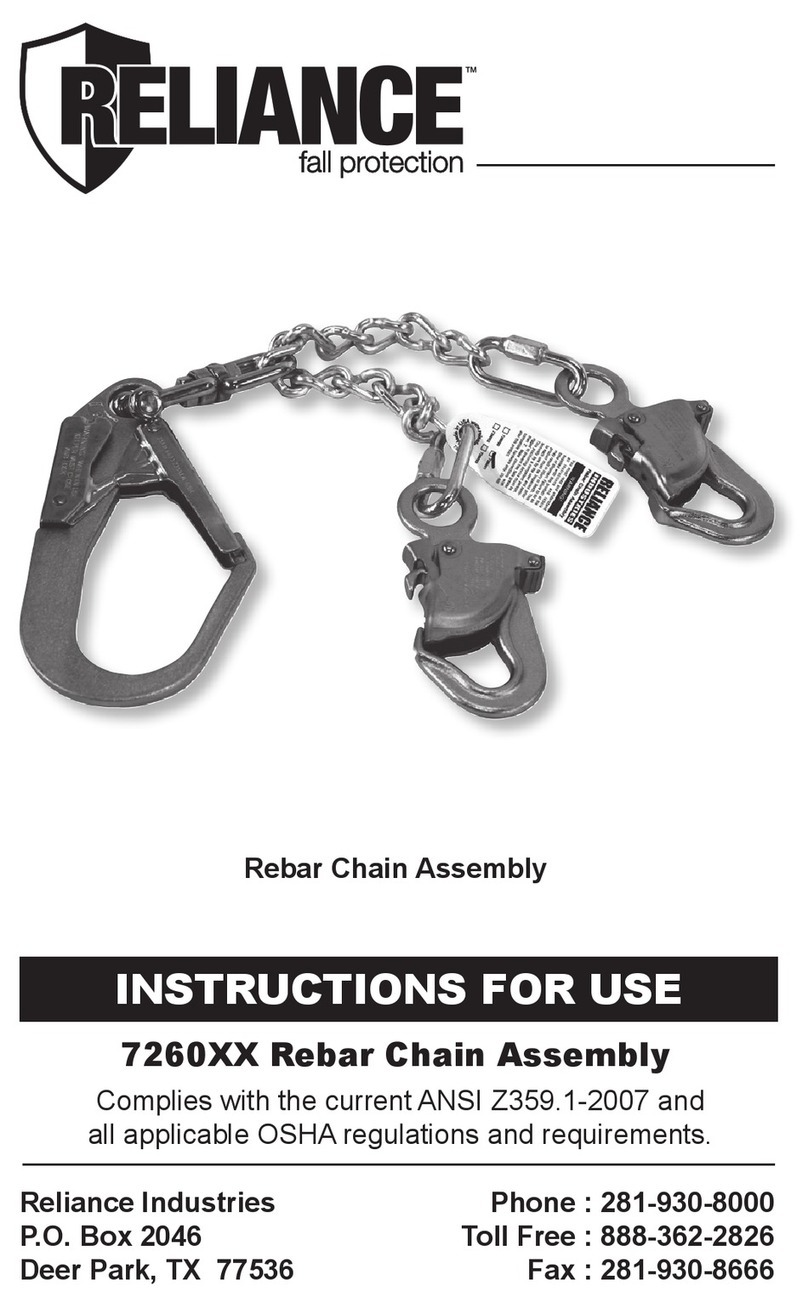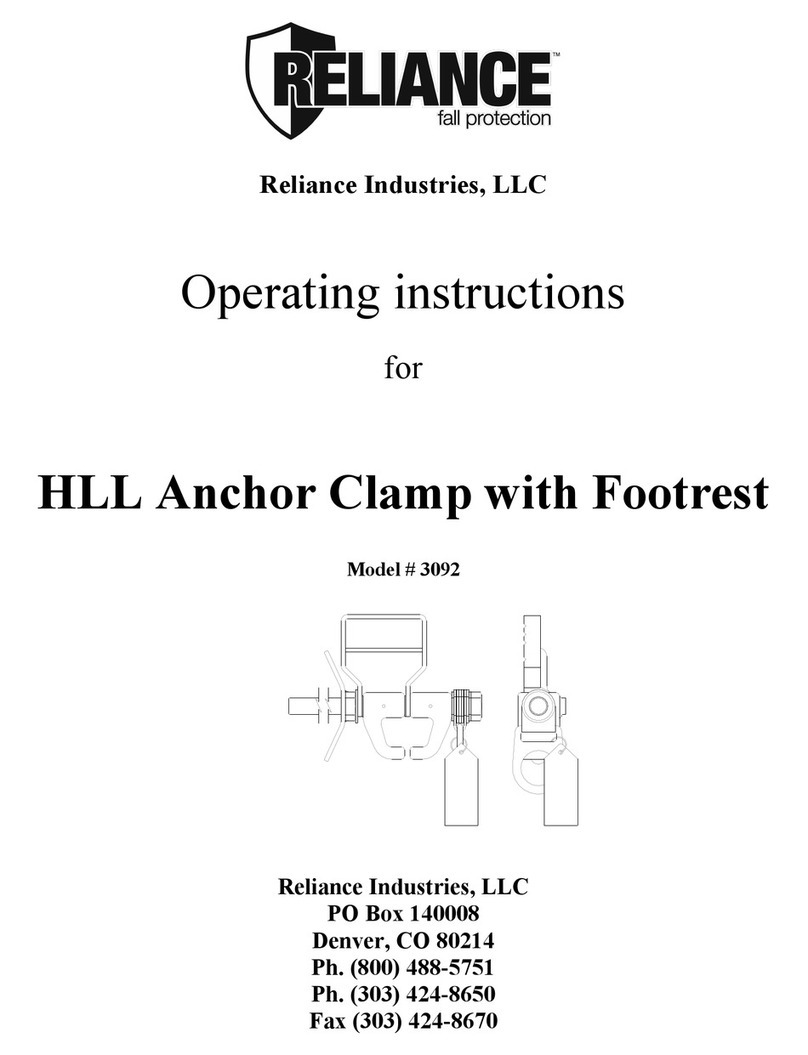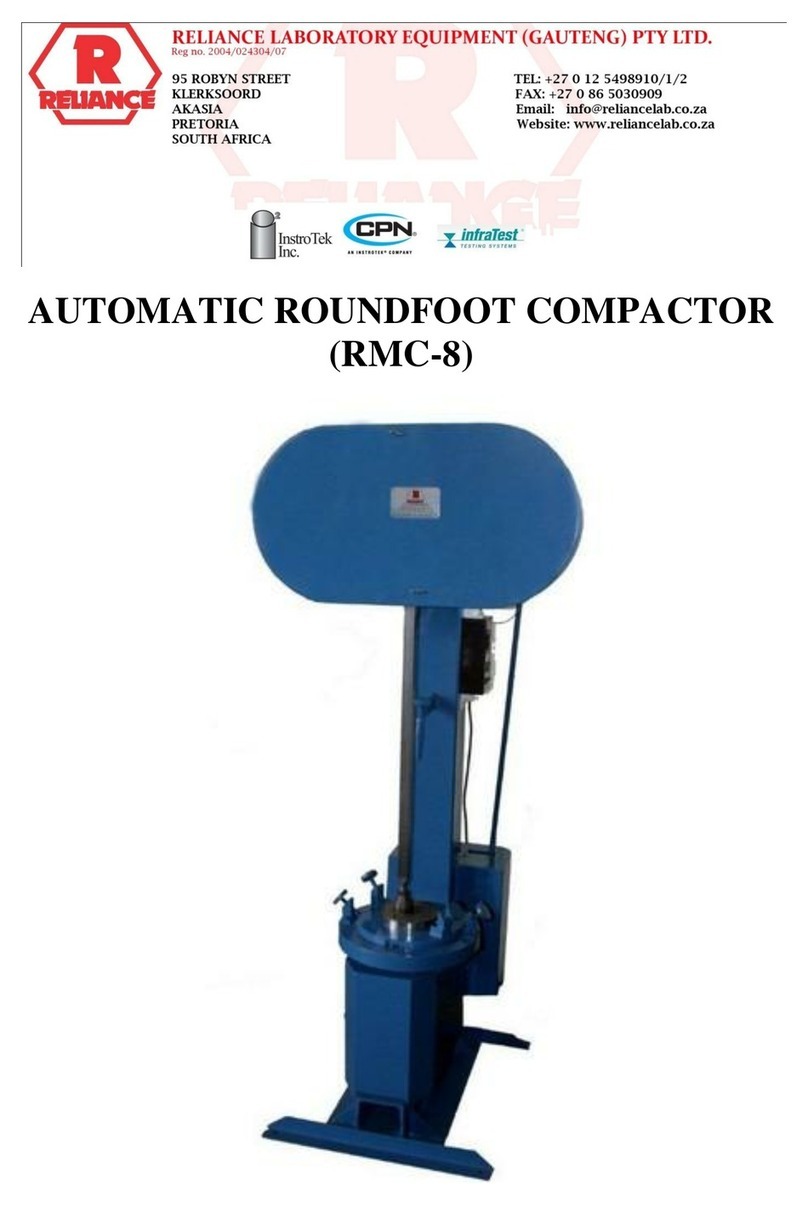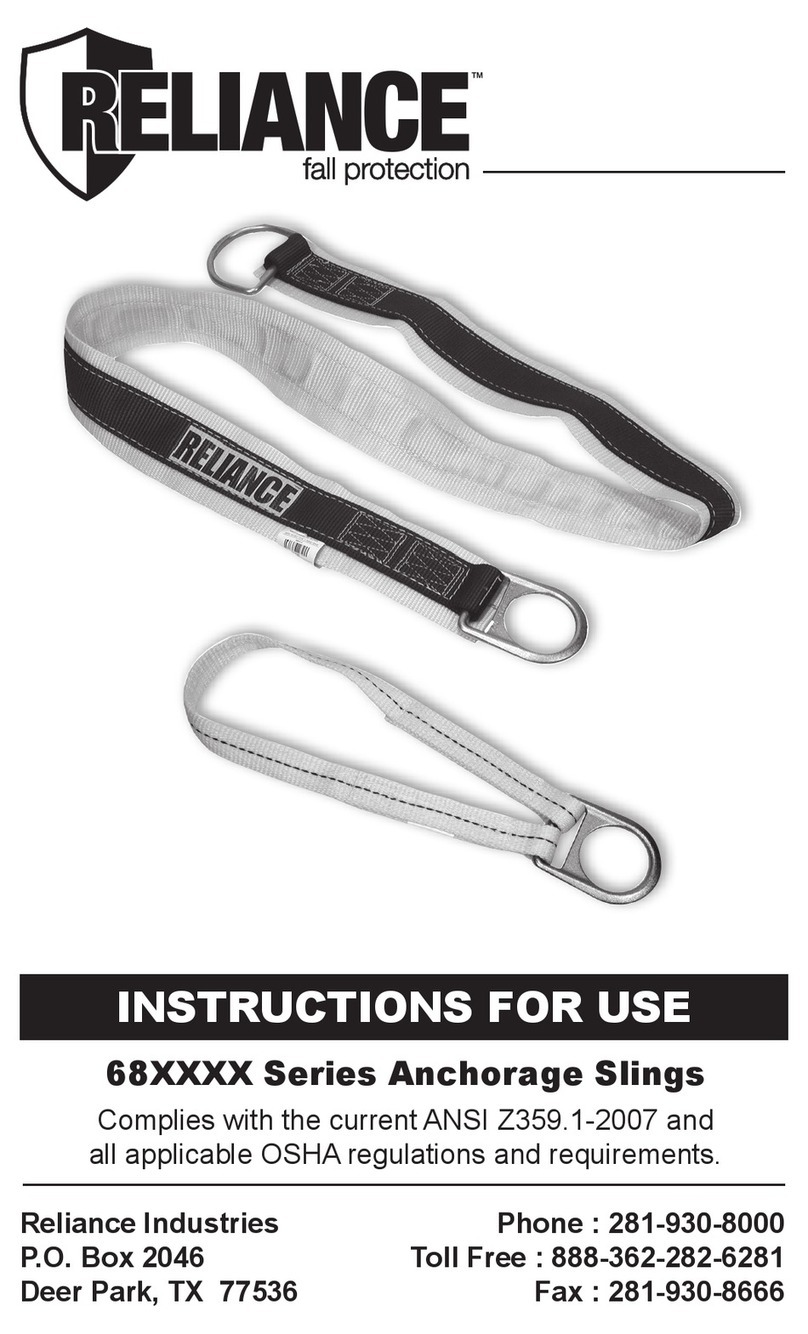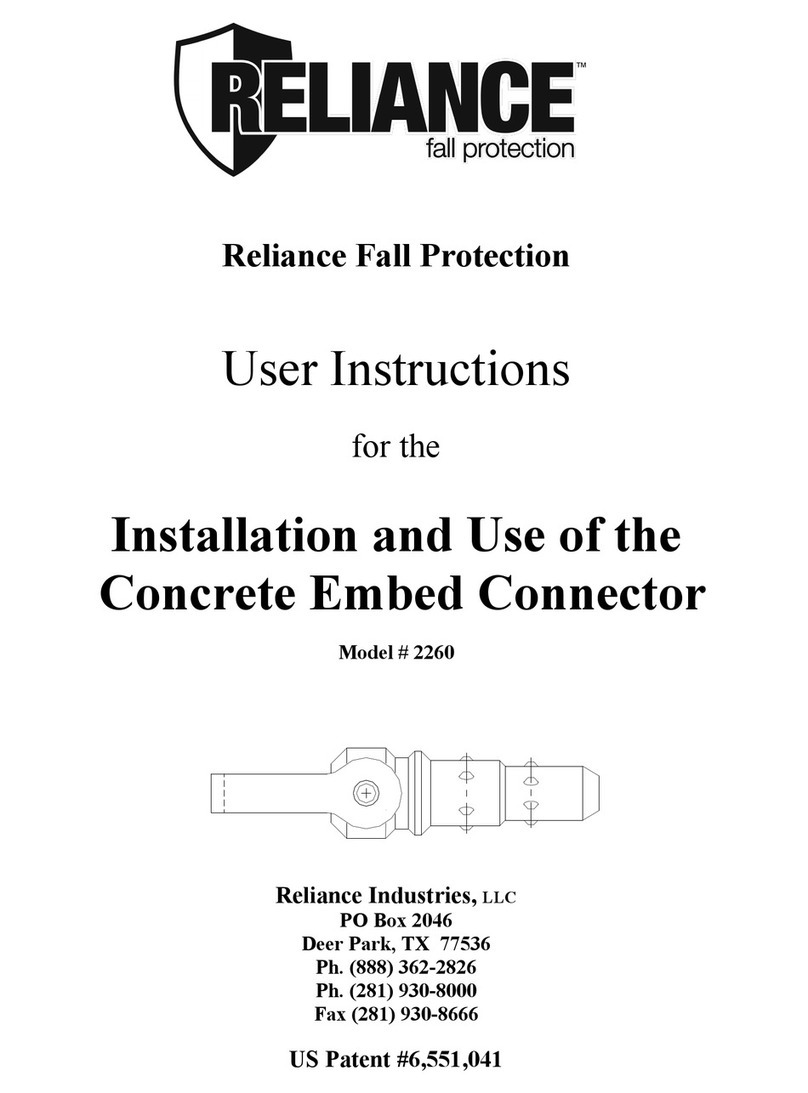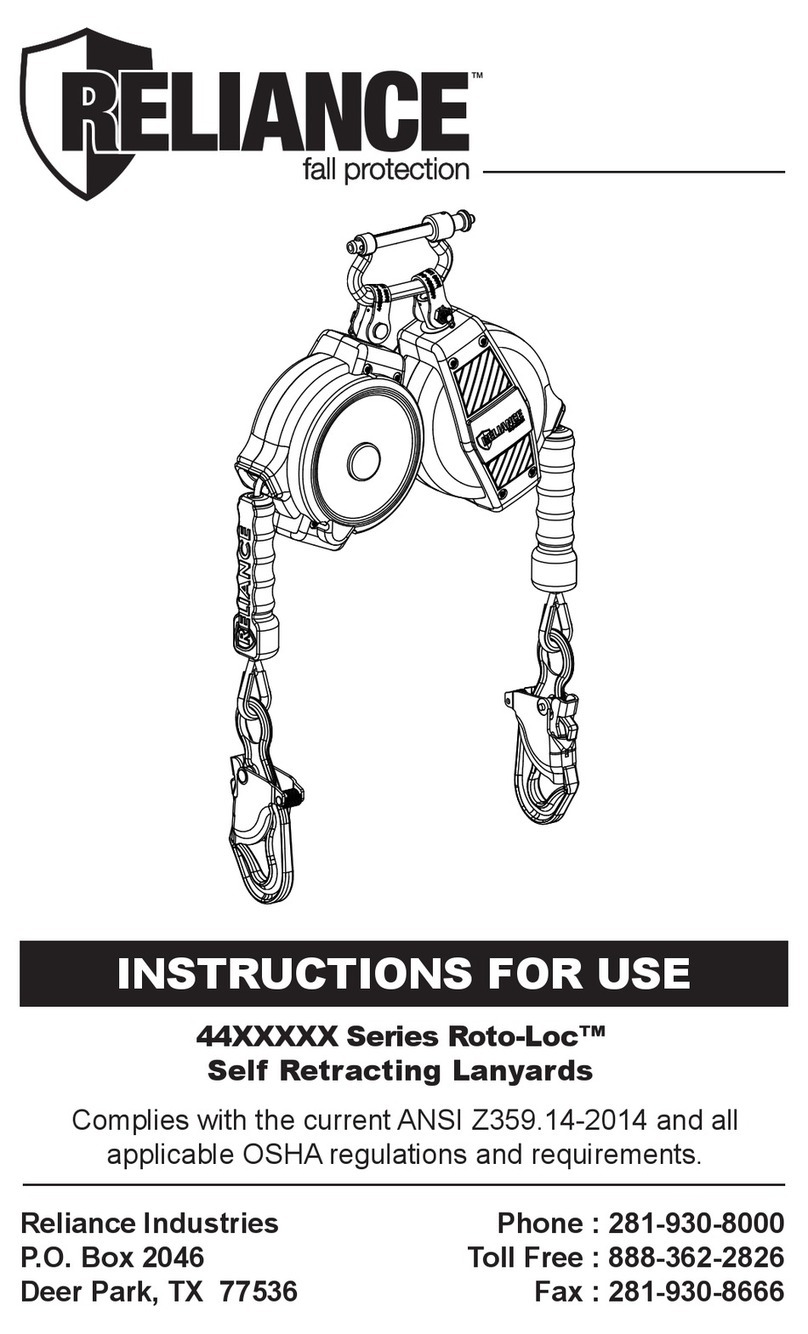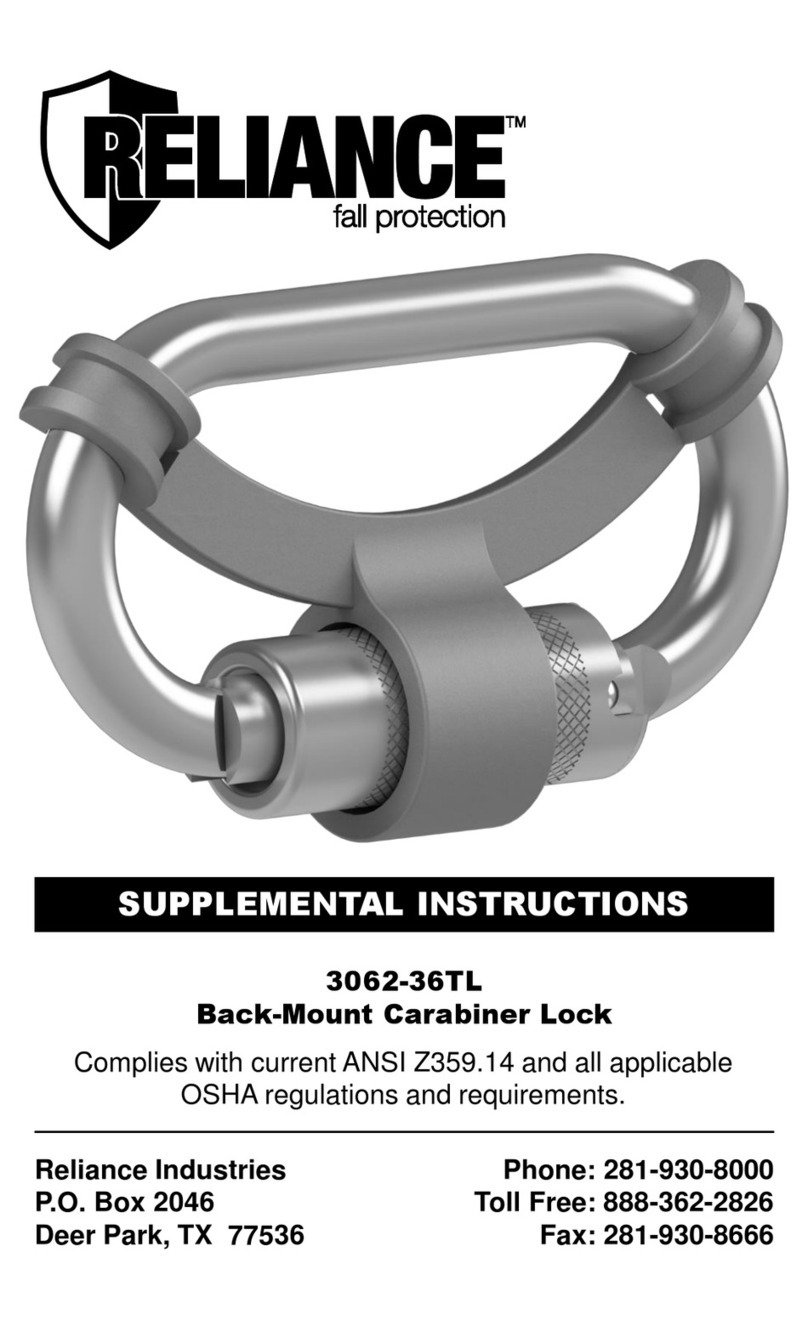
CAUTION:
Large throat snap hooks should not be connected to standard size
D- rings or similar objects which will result in a load on the gate if the hook or
D- ring twists or rotates. Large throat snap hooks are designed for use on fixed
structural elements such as rebar or cross members that are not shaped in a
way that can capture the gate of thehook.
2.4
ANCHORAGE STRUCTURE STRENGTH:
The structure to which the
trolley is installed must sustain static loads in the directions permitted by the
personal fall arrest system of at least 5,000 lbs. (22.2 kN) When more than one
trolley is installed on the same anchorage structure, the anchorage structure
strength must be multiplied by the number of personal fall arrest systems
attached to thestructure.
From OSHA 1926.500 and 1910.66: Anchorages used for attachment of a
personal fall arrest system shall be independent of any anchorage being used
to support or suspend platforms, and must support at least 5,000 lbs. per user
attached;
or
be designed, installed, and used as part of a complete personal
fall arrest system which maintains a safety factor of at least two (2:1), and is
supervised by a qualified person.
2.5
PERSONAL FALL ARREST SYSTEM:
Personal fall arrest systems used
with this equipment must meet applicable local, state, and federal (OSHA)
requirements. A personal fall arrest system incorporating a full body harness
must be capable of arresting a user’s fall with a maximum arresting force of
1,800 lbs., and limit the free fall distance to 6 feet or less. The deceleration
distance must be 42 inches or less. Freefall distance cannot exceed
subsystem manufacturer’s requirements, see instructions for moreinformation.
3.0 INSTALLATION AND USE:
WARNING:
Do not alter or intentionally misuse this equipment. Consult with
Reliance if using this equipment with components or subsystems other than
those described in this manual. Some subsystem and component combinations
may interfere with the operation of this equipment.
3.1
BEFORE EACH USE
of this equipment inspect it according to section5.2
3.2
PLANNING YOUR INSTALLATION:
You must plan the proper
configuration of your personal fall arrest system before installing and using this
equipment. All equipment must be inspected prior to use. Consider all factors
affecting your safety during use. The following list gives some important points
to consider when planning yoursystem:
A.
ANCHORAGE BEAM:
Select a rigid anchorage beam that is capable of
supporting the loads specified in section 2.4. Joints between beam sections
must be flush to allow the trolley to pass over smoothly. The beam must have
end stops at each end to prevent the trolley from rolling off the beam. The end
stops must be sized and positioned to safely stop the trolley. The trolley should
not catch or hang-up on the end stop; the trolley must be able to freely return
in the opposite direction after contacting the end stop. The trolley must be able
to freely travel the full length of the work operation area without obstructions or
coming in contact with adjacent structures and components. Trolley should be
kept directly overhead at all times and the beam must be level and free from
damage and deformation.












